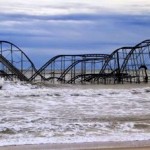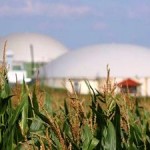
By 2080, global warming could result in one-fifth of the world’s lizard species becoming extinct, a global study has found.
Even under the most optimistic scenarios for curbing carbon dioxide emissions, the analysis by an international team shows that one-fifth of the globe’s lizard populations, corresponding to 6% of all lizard species, may go extinct by 2050.
“We’ve committed ourselves to that,” says Barry Sinervo, an evolutionary biologist at the University of California, Santa Cruz, who led the study. He and his colleagues found that climate change has already driven 12% of the populations of Mexico’s colourful Sceloporus lizards extinct since 1975.
If emissions continue at current levels, he predicts that by 2080, 39% of the world’s lizard populations will have vanished, corresponding to a 20% loss in species. The study is publish in Science this week[1].
It’s a stunning finding, says Raymond Huey, an evolutionary physiologist at the University of Washington, Seattle, who wasn’t part of the study team. “Lizards are animals that should be very tolerant of climate warming,” he says.
Wave of Extinction
Sinervo wasn’t intending to study extinctions. Rather, he had planned to use a Eurasian lizard, Lacerta vivipara, to examine the role of coloration in lizard evolution. But when he went to sites in France, Italy, Solovenia and Hungary where Lacerta had been studied, the lizards weren’t always there. A few years later, he found that Mexico’s Sceloporus lizards were also vanishing.
Concerned, he assembled a team to examine the issue globally. Studying reports of extinctions on five continents, the scientists concluded that the problem is widespread.
“It’s happening really, really fast,” Sinervo says. “We’re seeing a massive extinction wave sweeping across the planet.”
Huey warns that not seeing lizards doesn’t mean that they’re not there. They may just have been overlooked. “Populations go up and down,” he says. Still, he notes, Sceloporus is very conspicuous. “It would be hard to miss.”
“These kinds of studies take a lot of work, and people have just recently started to do them,” says Anthony Barnosky, a palaeoecologist at the University of California, Berkeley, and author of ‘Heatstroke: Nature in an Age of Global Warming’ (Island Press, 2009).
Of the handful of similar analyses, a 2008 study found population losses in amphibians living in Yellowstone National Park in Wyoming[2], and another found that small mammals in Yosemite National Park in California had tracked warming temperatures in the past century by shifting their range[3].
Feeling the Heat
Lizard disappearances in the areas the team studied can’t be due to habitat destruction because they’re occurring where habitat has been protected. Rather, hotter sites close to the equator or at low altitudes are most likely to lose their lizards.
To see how hotter climates damaged the reptiles, Sinervo’s team created a dummy lizard, set it out in the sun at sites in the Yucatán peninsula where Sceloporus is found and where it had gone extinct, and monitored its temperature. Like all organisms, lizards must avoid overheating and keep their body temperature within a certain range to survive.
The problem, the team found, seems to be warmer springtimes, rather than higher maximum temperatures at midday or in midsummer.
Higher temperatures in spring mean that the animals spend less of the breeding season out foraging and more time in the shade. “That is the time of year that females need the maximum amount of food,” says Huey. “If the temperature gets higher in the spring, then the lizards restrict their activity. They simply may not have enough active time to catch enough food.”
Underfed females do not have the resources needed to make young, causing populations to crash.
The ecological consequences of lizard extinctions are unknown. “If Barry’s right or even close to right,” Huey says, “the world as we know it will be very different. Lizards are primarily insect eaters. So if a population goes extinct, that will affect the insects living there. Lizards are also prey for many snakes, birds, mammals and some other lizards. But how serious those [effects] will be is going to be very difficult to predict.”
References
[1] Sinervo, B. et al. Science 328, 894-899 (2010).
[2] McMenamin, S. K., Hadly, E. A. & Wright, C. K. Proc. Natl Acad. Sci. USA 105, 16988-16993 (2008).
[3] Moritz, C. et al. Science 322, 261-264 (2008).
News Release dated May 13, 2010












